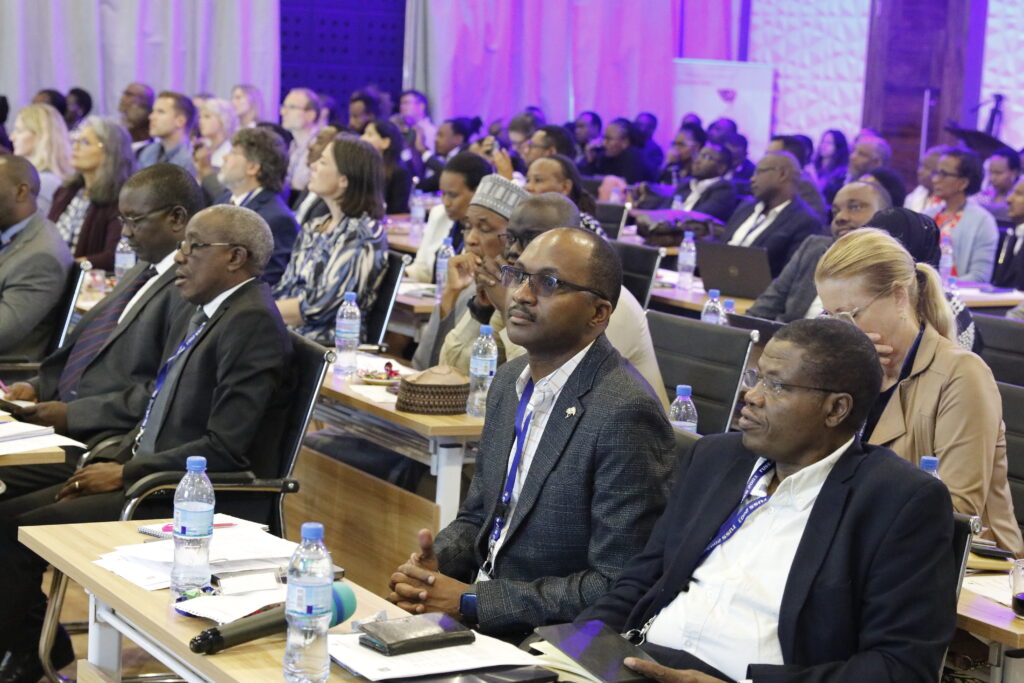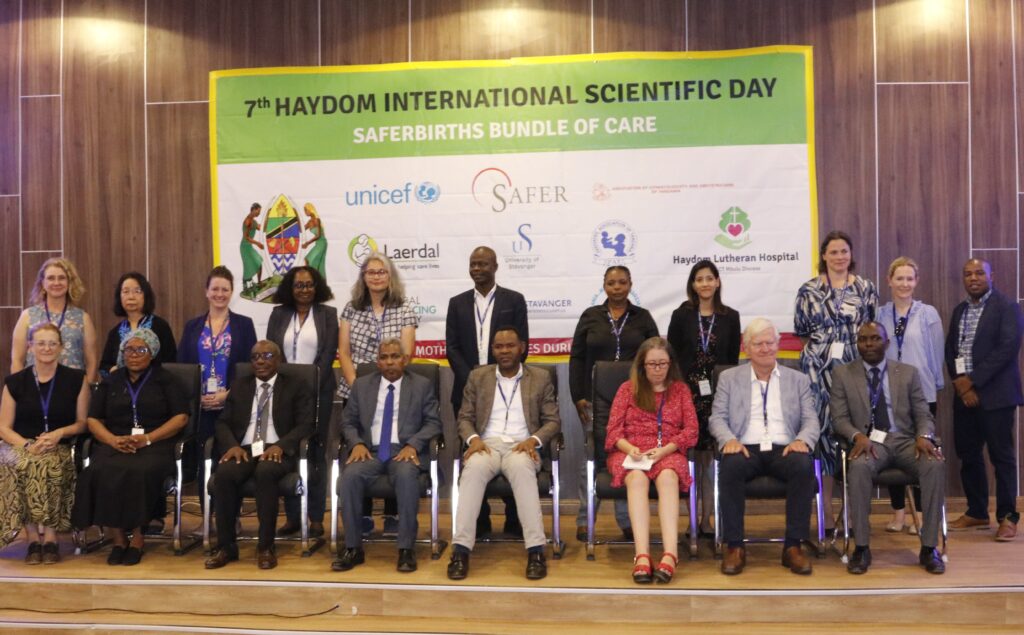June 2024
The 3rd annual stakeholder meeting for the Safer Births Bundle of Care program in Tanzania was held on May 24th, 2024. At the meeting researchers shared the promising lifesaving impact of the program, whilst policy makers and implementation partners discussed the program’s national scale up and its potential for international expansion. This could see thousands more mothers and newborns, globally, benefit from quality care that helps to save lives on the day of birth.
The meeting took place at the health facility where Safer Births first started, Haydom Lutheran Hospital in the Manyara region, and was part of their two-day International Scientific Conference. More than 45 participants attended, including important national stakeholders, such as the Tanzanian Midwives Association (TAMA), Association of Gynaecologists and Obstetricians Tanzania (AGOTA) and the Medical Stores Department (MSD), alongside numerous reputable Tanzanian academic institutions.
As an engaged partner in the program, the Tanzanian Ministry of Health was represented by Dr. Ahmad Makuwani, Director of the Division of Reproductive, Maternal and Child Health and Dr. Felix Ambrose Bundala, Assistant Director, Child and Adolescent Health. Individuals from Regional Administration and Local Government of Tanzania were also in attendance, including Regional Medical Officers and Regional Reproductive and Child Health Coordinators from the five regions implementing the SBBC program: Manyara, Tabora, Geita, Shinyanga and Mwanza.

Important international stakeholders were present, such as UNICEF, USAID, American Academy of Pediatrics and Jhpiego, all eager to learn more about the impact of the program and its implementation.
Ethiopian and Nigerian Presence
What was notable at this year’s annual meeting was the presence of Ministries of Health from other African countries also affected by a high burden of maternal and neonatal mortality – including Ethiopia and Nigeria. The attendance signals intent from both governments to progress with incorporating the Safer Births Bundle of Care into their maternal and newborn health strategies.
Facility Visits
As part of the wider two-day Scientific Conference, all participants were given the opportunity to visit health facilities which have implemented the Safer Births Bundle of Care program. During these visits they witnessed the impact on the healthcare personnel who shared how the adoption of low-dose, high frequency simulation training to better manage the most common causes of maternal and neonatal mortality has helped them save lives of mothers and newborns.
“We start learning on mannikins before we actually go into the real situation. So,
Manugwa Nteminyanda, Midwife and Regional Trainer at an SBBC Health Facility.
a person learns little by little, and these skills become ingrained in their
hands. So, when they attend the client, they do it confidently… Now when you
call for help with a client, someone is ready to come and help you. So, I see
that culture and attitude have changed too.”
The Future of SBBC
In July 2024, as part of the Tanzanian government’s drive to roll out and institutionalize SBBC nationally, 75 further health facilities will begin implementation of the program. This will mark the beginning of the national scale-up, which is due to take place across the remainder of 2024 and throughout 2025. If rolled out successfully, this could reach more than 4000 health personnel across the country, equipping them to better manage the leading causes of maternal and newborn mortality, helping to save thousands of lives.
